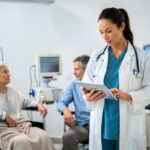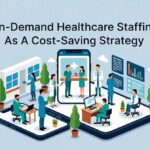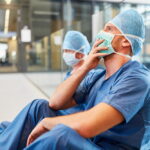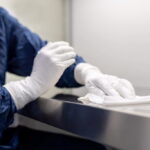Packaging has always been an essential component of the healthcare industry, as it plays a critical role in maintaining the efficacy of medical devices and pharmaceuticals. In recent years, however, packaging has become even more important, as it can now impact the entire healthcare landscape.
Matching Packaging to Healthcare Applications
With optimized packaging, medical devices and pharmaceuticals can maintain their efficacy, prolong their shelf-life, and even play an active role in the operating room.
On the other hand, packaging that fails to perform as anticipated during final validation can result in an OEM’s entire product failing to reach the market, or malfunctioning packaging in the field can compromise patient safety.
To ensure that packaging performs optimally, OEMs should look for healthcare-specific packaging suppliers that can become true partners, working collaboratively with them to design fit-for-purpose products. Even on a tight budget, businesses can look for professional printers for custom nutraceutical labels and flexible packaging, to leverage experience and know-how.
Partnering with a professional packaging provider instead of doing it yourself can make a significant difference in their ability to understand what solution is needed. Choose a supplier that is well-attuned to the needs of customers and immersed in the regulatory challenges they face on a daily basis. This can ultimately mean the difference between success and failure for the entire project.
Barrier Packaging for Healthcare Products
Manufacturing sterile barrier packaging for medical applications requires strict adherence to ISO-compliant cleanroom conditions from start to finish. But the efficacy of packaging for medical devices and pharmaceuticals is shaped long before the manufacturing process – it starts in the design phase.
Contacting a packaging provider that has experienced teams of designers and engineers with the ability to leverage modern software and technology coupled with first-rate drawing skills during development can result in solutions that best meet the OEM’s needs for pack performance, functionality, and product protection.
To achieve a thorough understanding of how a complete packaging solution will perform, it is critical to consider packaging distribution configuration. Minor changes in the length, width, and height of a thermoformed product can have a major effect on logistic efficiency, both in terms of getting the thermoformed product to the OEM and the OEM maximizing the pallet loads of their finished goods for optimum sterilization efficiency.
For example, de-nesting features and snap features that secure the content into thermoformed trays can impact the logistic volume when shipping empty nested trays and storage prior to loading product on the line. Making these features visible with a volume study gives OEMs a better understanding of the impact on the process and facilitates the decision-making process of the final design.
Checking Efficiencies
Volume efficiency is increasingly important for OEMs who are challenged with balancing warehouse space with manufacturing footprint to maximize revenue.
Giving the designer an overview of the holistic packaging requirements brings them closer to the project and allows them to add more expertise. Downstream thinking beyond the OEM to the operating room is extremely valuable when it comes to differentiating oneself in the marketplace.
Conclusion
A clear understanding of the volume required to move tray parts allows the thermoformed to make informed decisions on the optimum shippers, bags, and pallets required to send products to the OEM.
Through careful selection of the above items, reduction of the number of components needed to ship parts can be achieved, eliminating cost and material waste of shipper components.
Read Also
- Revolutionizing Patient Engagement: Innovative Solutions for Improved Care and Treatment SuccessNavigating healthcare system can often feel overwhelming for patients. Between appointments, prescriptions, and treatment regimens, it’s easy for crucial details to get lost in the shuffle. That’s why effective patient engagement and support solutions are more important than ever. Companies like Serva Health, with their pharma hub services, are stepping up to ensure that patients… Read more: Revolutionizing Patient Engagement: Innovative Solutions for Improved Care and Treatment Success
- On-Demand Healthcare Staffing As A Cost-Saving StrategyThis is an exciting and challenging time for the healthcare industry. Technology is advancing almost faster than humans can keep pace. New legislation is creating fresh challenges for the future of healthcare, and the shifting population demographic continues to place more pressure on healthcare facilities. Amidst these changes, healthcare facilities are facing a critical staffing… Read more: On-Demand Healthcare Staffing As A Cost-Saving Strategy
- The Benefits of Contract Labor Staffing in HealthcareThe most successful healthcare facilities today aren’t just reacting to crises—they are building workforce resilience to withstand them. Unpredictable patient demand, coupled with persistent nursing shortages, has made the traditional staffing model obsolete. Relying on mandatory overtime to cover a sudden surge in capacity is a recipe for high turnover and rising employee burnout relief… Read more: The Benefits of Contract Labor Staffing in Healthcare
- Management Reinforcement for Healthcare Providers in a Shifting SystemHealthcare is changing faster than ever. So, providers are feeling the pressure to keep up. New technology, changing patient needs, and constant rule updates make it tough for managers to stay on top. Strong leadership helps teams work better, give great care, and stay happy in their jobs. Here’s how healthcare leaders can strengthen their… Read more: Management Reinforcement for Healthcare Providers in a Shifting System
- Why Effective Disinfection Remains the Foundation of Public HealthFrom hospitals and schools to transport hubs and food production sites, disinfection is central to breaking the chain of infection and protecting community health. The COVID-19 pandemic highlighted how crucial surface hygiene and environmental control are in reducing the spread of harmful microorganisms. Yet, beyond emergency response, routine and validated disinfection practices remain the cornerstone… Read more: Why Effective Disinfection Remains the Foundation of Public Health
- How to Navigate Your Medical Assistant Career PathBecoming a medical assistant can feel both exciting and a little stressful. This job lets you work closely with doctors and other healthcare workers to help patients. But with so many different paths to take, it can be hard to know where to start or how to plan your career. Wouldn’t it be nice to… Read more: How to Navigate Your Medical Assistant Career Path







